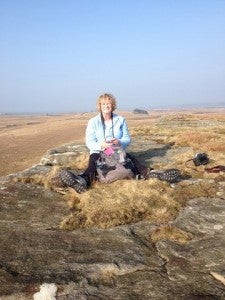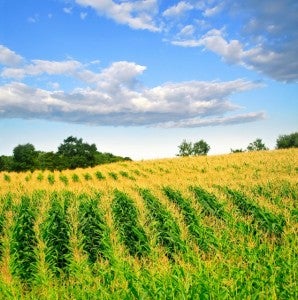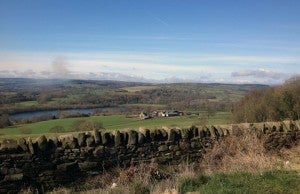 “It’s the hydrology, stupid!” a colleague once joked about the thrust of my career. I couldn’t agree more. I study what’s working and what’s not across agricultural landscapes — the Midwest corn belt is a current focus — and believe that the fundamental changes we’ve made to the land by draining it, removing native vegetation and altering the water flow have caused many of the environmental issues the region faces today.
“It’s the hydrology, stupid!” a colleague once joked about the thrust of my career. I couldn’t agree more. I study what’s working and what’s not across agricultural landscapes — the Midwest corn belt is a current focus — and believe that the fundamental changes we’ve made to the land by draining it, removing native vegetation and altering the water flow have caused many of the environmental issues the region faces today.
I’m intrigued by agriculture, where people and nature intersect across vibrant landscapes to provide tangible benefits to individuals, local communities, and the surrounding ecosystem. My job, which allows me to indulge that fascination on a daily basis, requires me to simultaneously think like a scientist and an environmental advocate, a dual role that I first started to cultivate growing up in rural England.
Growing up among sheep and flowers
The vision of people living in harmony with nature has inspired me since I was a child exploring the rolling hills and scattered farms that dot the landscape in County Durham, England. It’s easy to admire the panorama and think it’s just a wild, natural place, yet it’s so much more than that. The land isn’t right for crops or cattle. Instead, sheep freely roam within the patchwork of stone walls farmers built to protect their flocks.
When I was a teenager, I realized that people sometimes threaten this peaceful coexistence. My parents and I protested a proposal for a dam in Teesdale, the home of the rare spring gentian, a blue, five-petaled flower species that dates back to the Ice Age. Much to my dismay, the dam was ultimately built and most of the flowers, which had survived for millennia, were lost in the ensuing flooding of the valley. You can still spot the flowers if you visit the region, but they are much harder to find today. The episode continues to remind me how crucial it is to speak out to protect the landscapes we treasure.
Hydrology is key in the Corn Belt
The Upper Mississippi River Basin is one of those landscapes. People assume that fertilizer runoff from farms into the Mississippi River is the sole cause of an annual dead zone in the Gulf of Mexico. There’s no question that fertilizer plays a role and that we need to manage its use, but that’s just one part of the equation. We must also study the impacts of hydrology on the Corn Belt environment in order to address the Gulf problem in other ways, like creating new wetlands and restoring existing wetlands and streams to health.
My colleagues and I are researching the ancillary benefits that would result from pursuing these solutions. For example, in addition to filtering polluted water, wetlands can help mitigate the effects of extreme weather, provide habitat for different species, and protect downstream areas from floods. Some people claim that altering the landscape in such ways would be too expensive, but we’ve found that in the grand scheme of things, the cost would be minimal compared to the ecological and social benefits we’d reap.
Setting quantitative goals
 Over the course of my career, I’ve learned that retreating to the green moral high ground is not particularly effective. On the other hand, collaborating with people who don’t always see eye to eye, but who voluntarily come together to solve environmental problems like those in the Upper Mississippi River Basin, can be hugely rewarding.
Over the course of my career, I’ve learned that retreating to the green moral high ground is not particularly effective. On the other hand, collaborating with people who don’t always see eye to eye, but who voluntarily come together to solve environmental problems like those in the Upper Mississippi River Basin, can be hugely rewarding.
Through my participation in Field to Market, a multi-stakeholder sustainability effort that includes environmental NGOs, farmer groups, food producing associations, and other organizations along the food supply chain, I advocate for establishing ambitious quantitative goals for environmental improvements — reducing greenhouse gas emissions by 25 percent is one example — because it’s simply not enough to say “we need to do better.”
Without commitment and voluntary action from all parties, we won’t get there. However, I’m encouraged by the diversity of people who are taking proactive steps to help shape multifunctional landscapes that might one day be environmentally, economically and socially sustainable, and bring us closer to the harmony that defined the English countryside of my youth.










